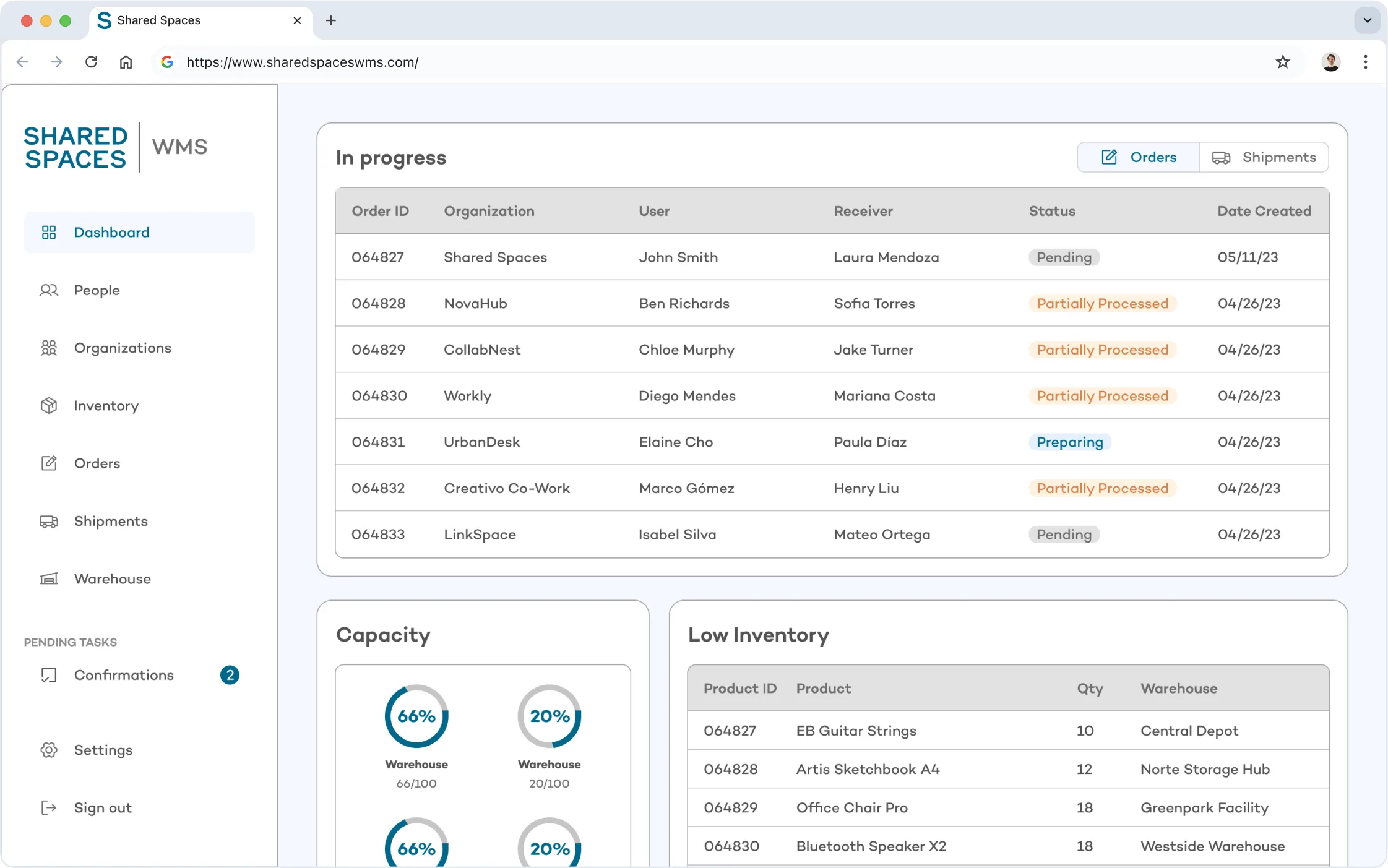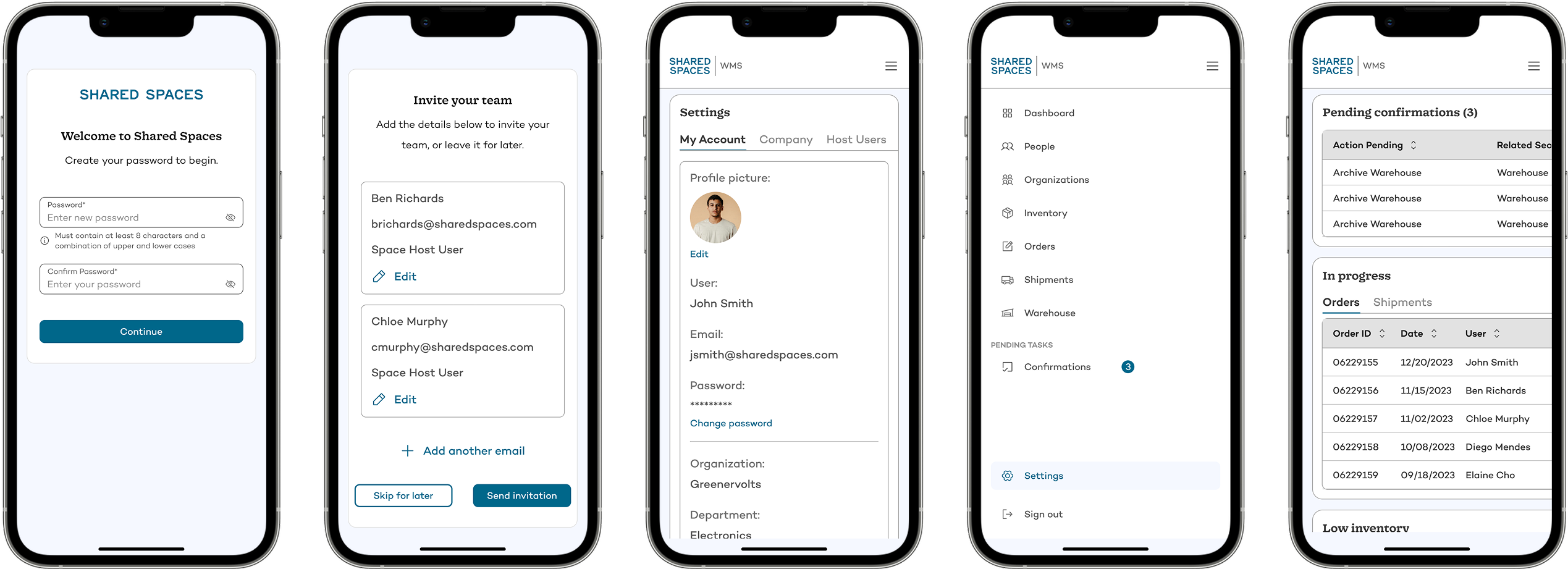
2024
SCROLL
Their network of flexible spaces supports the dynamic needs of modern businesses without the long leases or high overhead of traditional rentals. By connecting property owners with small companies and startups in need of short term, affordable spaces, Shared Spaces is redefining how businesses access the physical infrastructure they need to grow. In 2024, they expanded their offering with the launch of Shared Spaces WMS, a cloud-based Warehouse Management System tailored for SMBs. This powerful tool was designed to simplify inventory, streamline operations, and make it easier for companies to manage physical goods across dynamic, multi use environments.
Capabilites
Web App Development

Shared Spaces had a clear mission to build a scalable, intuitive Warehouse Management System tailored for companies that don’t have the resources for traditional enterprise software. They were looking for a long-term product partner, not just a dev shop. We needed to move fast, but also build a foundation that could grow alongside their platform. Shared Spaces needed help with:
Build a user friendly WMS tailored for non-technical warehouse staff.
Architect a modular backend that scales across space types and multiple locations.
Create admin tools that empower both space hosts and renters.

We partnered with Shared Spaces to define the product vision, UX workflows, and tech architecture for the new WMS platform. It had to be simple enough for small teams to adopt quickly, yet flexible enough to support a wide range of warehouse configurations. Instead of bloated enterprise features, we focused on delivering the core value first: letting users map their physical space digitally, track inventory with precision, and optimize space utilization across sites. We designed:
A warehouse configurator that mirrors real world layouts with aisles, levels, and pallet locations.
Inventory logic that supports custom ownership, locations, and transfers.
Intuitive UI for order management, shipments, and incoming stock.
We utilized modern technologies to ensure a smooth and high-performing application:


Ruby on Rails


Next.js


AWS


Figma

SWIPE
We worked closely with Shared Spaces to develop a scalable and intuitive Warehouse Management System that met the needs of diverse customers. Our focus was on creating functional tools that streamlined operations and simplified inventory management. We delivered key features to enhance the user experience, from digitalizing warehouse layouts to optimizing order fulfillment. Here’s a breakdown of what we delivered:
We developed a visual tool that allows users to configure their warehouse digitally to match their real-world layout. This included adding aisles, shelving levels, and pallet slots. It also enabled users to dynamically update their warehouse structure as their storage needs change and most importantly, track available space to monetize.
With Ruby on Rails, PostgreSQL, and Redis, we built a scalable engine capable of powering large datasets and complex marketplace interactions with low latency and strong data integrity.We built tools that let businesses manage both incoming and outgoing shipments, whether from their own inventory or as a service for clients. Users can pick items from multiple warehouse locations, track live status updates, and fulfill orders accurately keeping teams and customers in sync.
Our system allows for full control over every item in a warehouse. Users can assign ownership, reconcile counts, and move inventory across warehouse locations with precision. It also enables filtered product searches, product-level order visibility, and a streamlined transfer experience between departments and spaces.
Whether you're looking to launch, scale or innovate, let’s team up.

Build a functional, market-ready product designed to impress investors and secure funding.

Augment your engineering team with top-tier individual developers and custom-built teams from LATAM.

Tackle technical challenges, from project architecture to performance, scalability, and more.